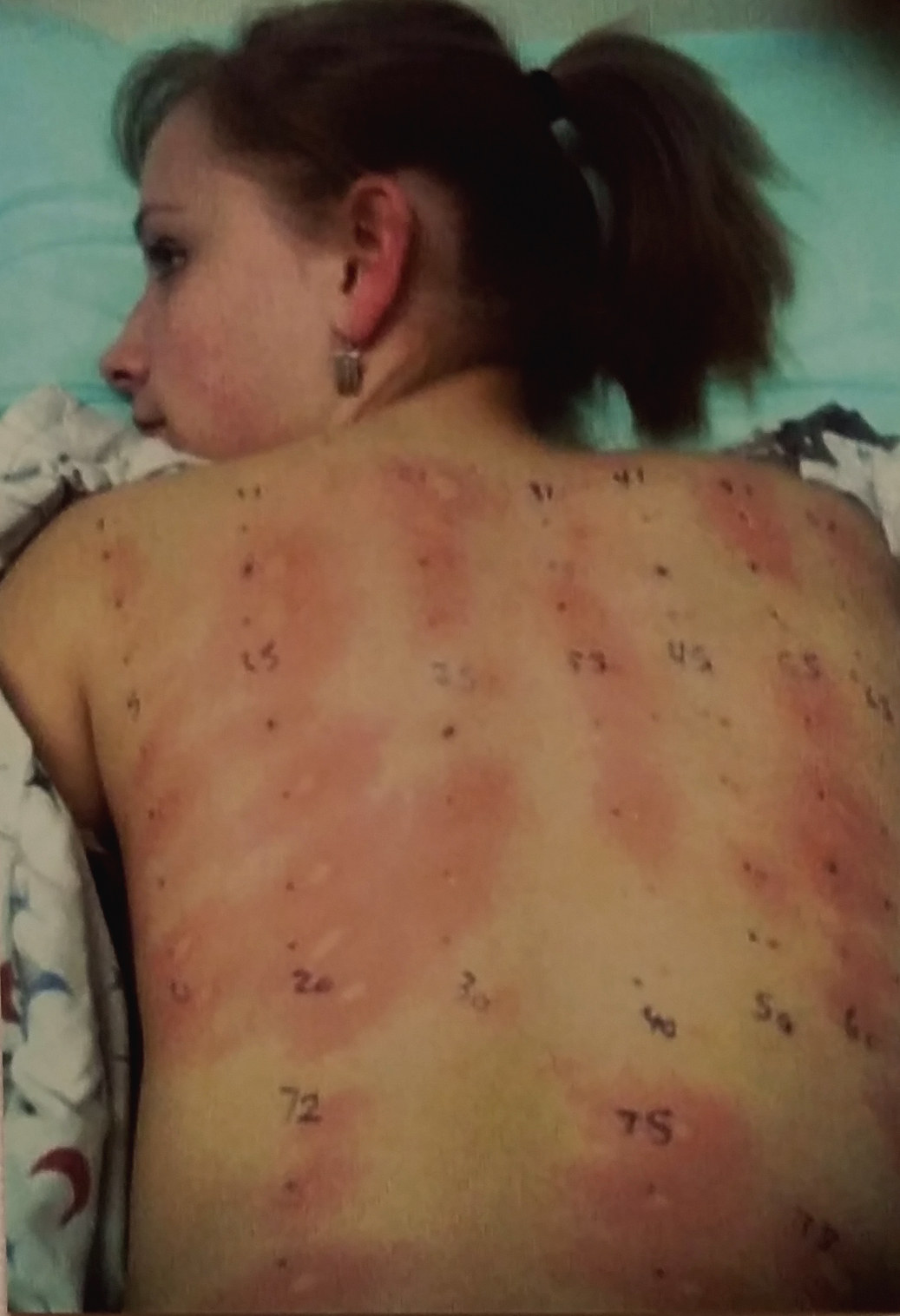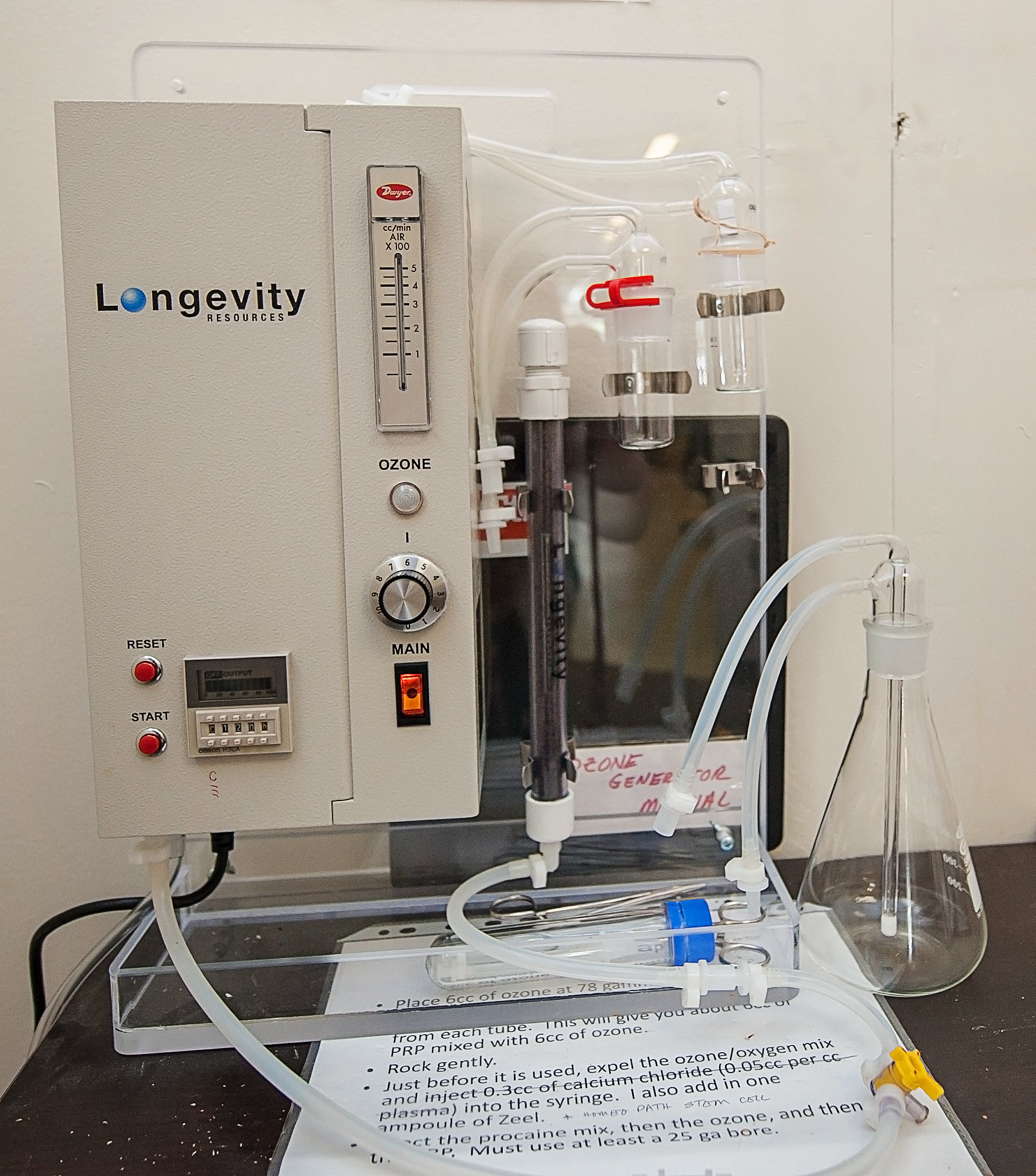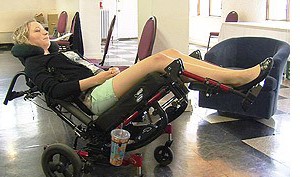 Published on February 2, 2014 – Last Updated on August 28, 2025
Published on February 2, 2014 – Last Updated on August 28, 2025
Today, I am a mother of two, a wife, and the owner of Nuthatch Health Pathways, a novel health navigation service. Meanwhile, others with Postural Orthostatic Tachycardia Syndrome are often told they have little options beyond medication, electrolyte drinks, exercise, and compression gear. The dysautonomia/POTS which developed in 2009, ultimately resolved in early 2014. I experienced gradual improvement and better functioning throughout the 18 months I implemented a protocol alongside my medical treatments in 2012 called the Dynamic Neural Retraining System Program (DNRS).
It took me 10 years to find an effective combination of support, and my wish is that my story leads you to feeling comfort and improvement in much less time. I am honored to share my story so those with POTS may have hope in their own improvement. My story is a long one, but I offer you the following detail so you may truly understand you are not alone. This is my full story, written for you with much love and admiration.
The concept of limbic system neural rehabilitation was mentioned to me by a Functional Medicine MD after we had exhausted all treatment plans recommended for Postural Orthostatic Tachycardia Syndrome by the Mayo Clinic, his well known practice, and 30 additional physicians. I discuss the DNRS resources in detail in DNRS Info. While DNRS doesn’t replace medical interventions, I think DNRS can offer individuals something uniquely fruitful.
I started POTS management medication in 2009, Nadolol and Florinef, three years prior to DNRS. The POTS medications controlled my heart rate and blood pressure since 2009, but I experienced no change in ability or symptom improvement for years, despite my numbers returning to healthy range with medication. That was a great source of confusion for me. Why did I continue to feel every symptom and the overall debility of POTS even though my heart rate and blood pressure were normalized with the medication? However, after I began limbic system rehabilitation in 2012 and completed it in 2014, I was given the green-light by my doctor to slowly taper off my POTS medications because I was also feeling better. Weeks later, an orthostatic test performed at the clinic proved I had indeed recovered from Postural Orthostatic Tachycardia Syndrome. So, in 2014, I was free of POTS medication and my blood pressure was stable from supine to standing at 120/78 (previously 80/60) and my heart rate remained in the 70s (previously 135 bpm). I have not needed the physiological aid of the non-selective beta-blocker Nadolol to slow my heart rate or the corticosteroid Florinef to raise my blood pressure since my recovery from POTS back in 2014.
Disclosure: I receive a small commission when the DNRS program is purchased after viewing my site. Please be assured, this is not why I share my story. I made my site for you long before I received or knew of any affiliate benefit.
At the age of 8 years old, I fell ill with a serious viral infection which caused transverse myelitis in my legs. After 4 months of being unable to bear weight on them, I spontaneously regained the use of my legs. However, my doctors believe this virus altered my nervous system, later manifesting into ever worsening illness after a series of additional triggers.
By age 19, I had accumulated a great number of health conditions. Severe Dysautonomia, or Autonomic Nervous System Dysfunction, was the all encompassing diagnosis given to me, which described the dysfunction in each system of my ailing body. The list of medical and clinical diagnoses given to me by a team of Medical Doctors at the Mayo Clinic included:
Postural Orthostatic Tachycardia Syndrome (POTS)
Fibromyalgia (FMS)
Chronic Fatigue Immune Dysfunction Syndrome (CFIDS/CFS)
Multiple Sleep Disorders (including Atypical Narcolepsy)
Irritable Bowel Syndrome (IBS)
Pollen-Food Allergy Syndrome / Mast Cell Activation / Food & Environmental Allergies
Hyperkinetic Movement Disorder / Non-Epileptic Seizures
Multiple Chemical Sensitivity (MCS)
Electromagnetic Hypersensitivity Syndrome (EHS)
Depression and Anxiety
Other conditions I had were mitochondrial dysfunction, adrenal fatigue, leaky gut syndrome, multiple latent viral infections including Epstein-Barr and Roseola, systemic yeast infection (Candida), recurrent bacterial infections, heavy metal (lead and arsenic) toxicity, and suspected Lyme/Bartonella/Babesia infections. Due to the immense discomfort of these conditions combined, depression and anxiety were natural additions to the list.

While in high school, I began experiencing a growing list of pollen allergies, food allergies and sensitivities in addition to chronic sinus infections, exercise-induced asthma, and digestive complications and pain. Years of allergy shots only exacerbated my existing allergies and led to a development of more allergies. I did my best to deal with the stress of academia while my allergies worsened alongside my older sister’s grim struggle with Central Nervous System Lyme Disease. Her story is found at www.lymetolimeade.com
During this Allergy Skin Test, I reacted to 54 of the 76 foods, pollens, and animals tested. I was prescribed to carry dual EpiPens as I was told I would need both, oral antihistamines, emergency inhalers, and was recommended a regimen of nasal washes. While these did not fully manage my allergies, they kept me somewhat afloat. This test was taken early on in my illness. Had this test been conducted later on, we are sure I would have reacted positive to every antigen tested.
When I attended college to pursue engineering, my health had fallen apart. By my second year, I was unable to walk up a flight of stairs with no explanation why. This was quite worrisome to me as I was a full-time student living on my own. But after a quick visit with a doctor, he told me that I had contracted mononucleosis (Epstein-Barr Virus) and from that, subsequently developed Postural Orthostatic Tachycardia Syndrome (POTS). My heart rate at rest was 135 bpm, and even while asleep, my heart rate sped along at 120 bpm. Upon standing, my blood pressure read 80/60. At the same time, I had painful and persistent urinary and uterine bacterial infections, a systemic fungal infection (Candida), painful plantar warts, and heavy metal (lead and arsenic) toxicity.
I underwent series of unsuccessful treatments including multiple rounds of anti-virals, antibiotics, anti-fungals, wart-removal surgery, and one attempt at metal chelation therapy. The anti-viral Valcyte was so disruptive, I was rushed to the hospital via ambulance after I was found passed out in a bathroom on campus. I was later told that my heart rate was inaudible by stethoscope and my blood pressure so low it did not register on the blood pressure cuff. Needless to say, I discontinued the medication Valcyte after the second time I was sent to the ER. As for antibiotics, as soon as I finished one round, almost immediately I required another as the infection would return in full force. I was on the anti-fungal Diflucan for several months at a time, always requiring another course after I had completed another half-year round. And no matter how many times the Podiatrist removed the warts on my feet, they came back as if they had never been surgically removed. It was clear to all of us that my immune system was not able to do its job, but at the time, we had no idea how to support it despite our numerous and sometimes very desperate attempts to help.
All the while, each of these treatments further weakened my body and overloaded my nervous system. I became incredibly resistant to sleep – requiring unusually high doses of medication to feel mildly drowsy. During this experimentation period to find medication that would help me sleep, I had a serious reaction to a tranquilizer. From it, I developed a sizable hyperkinetic movement disorder in the form of chronic non-epileptic seizures. I convulsed and twitched uncontrollably for hours on end which often resulted in a trip to the Emergency Room. Even after discontinuing the problematic medication immediately, my body continued to shake and convulse a year later. The doctors explained this was very unexpected; however, they believed the medication had damaged my dopamine receptors. From my perspective, it felt as though my brain had short circuited and fried.
 For the extreme exhaustion, I sought treatment from a well-known Chronic Fatigue Clinic. There I tried numerous combinations of supportive and energizing medications and supplements. The IV Nutrient Therapy was counterproductive, as I became violently ill after each session. After this treatment, test results showed the mitochondrial output of my cells had significantly reduced to that of an elderly woman. The treatment was not only ineffective, but it greatly worsened my condition. For the multiple latent infections I had developed, I was treated with Major Autohemotherapy (MAH) Ozone Treatment with Ultra Violet Blood Irradiation (UVBI) at a Functional Medicine Clinic. This IV treatment irradiates pathogens in the blood by having it injected with ozone that goes into a machine under UV light before being returned to the body. After four rounds of this treatment, I could no longer continue due to the severity and intensity of my reactions where I would become violently ill after each session and subsequently weaker.
For the extreme exhaustion, I sought treatment from a well-known Chronic Fatigue Clinic. There I tried numerous combinations of supportive and energizing medications and supplements. The IV Nutrient Therapy was counterproductive, as I became violently ill after each session. After this treatment, test results showed the mitochondrial output of my cells had significantly reduced to that of an elderly woman. The treatment was not only ineffective, but it greatly worsened my condition. For the multiple latent infections I had developed, I was treated with Major Autohemotherapy (MAH) Ozone Treatment with Ultra Violet Blood Irradiation (UVBI) at a Functional Medicine Clinic. This IV treatment irradiates pathogens in the blood by having it injected with ozone that goes into a machine under UV light before being returned to the body. After four rounds of this treatment, I could no longer continue due to the severity and intensity of my reactions where I would become violently ill after each session and subsequently weaker.
I became unable to sit or stand for more than a moment – and even that was done with great difficulty and pain. As you might imagine, I put my schooling on hold and moved back to my parents’ house. I required full-time care from my amazing mother and a hired nurse. The chest pain, tachycardia, low blood pressure, and blood pooling in my legs limited me to a full lying down position. The blood pooling was so prominent, my legs swelled and became visibly purple if not elevated above my heart. Lying down however was also extremely uncomfortable. Between the chronic palpitations and burning nerve pain in my chest and foot that had involuntarily curled and locked all my toes closed, it was very difficult to be in the reclined position which I was confined to.
 Twice I went to the Mayo Clinic in Rochester, Minnesota where the physicians are the best of the best. I was hopeful and excited to learn the information they were going to share with me. They were exceedingly proficient at naming me with a number of diagnoses (all the ones you saw at the top) after the intensive neurological and immunological testing was complete. However, the team of doctors respectfully explained to me they were not sure a solution existed for me. Perhaps more interestingly, it wasn’t that my condition was something they hadn’t seen before, it was that effective treatment was not known to them. Despite this cloud of mystery, we continued on with their best Postural Orthostatic Tachycardia Syndrome suggestions.
Twice I went to the Mayo Clinic in Rochester, Minnesota where the physicians are the best of the best. I was hopeful and excited to learn the information they were going to share with me. They were exceedingly proficient at naming me with a number of diagnoses (all the ones you saw at the top) after the intensive neurological and immunological testing was complete. However, the team of doctors respectfully explained to me they were not sure a solution existed for me. Perhaps more interestingly, it wasn’t that my condition was something they hadn’t seen before, it was that effective treatment was not known to them. Despite this cloud of mystery, we continued on with their best Postural Orthostatic Tachycardia Syndrome suggestions.
Over the coming months, I was put on a combination of a non-selective beta-blocker to decrease my heart rate (Nadolol) and the corticosteroid (Florinef), thigh-high compression stockings, and high salt diet to increase my blood volume and pressure. This combination stabilized my blood pressure and heart rate, but quite oddly, my chest pain and ability to sit upright never improved. This was perplexing for all of us. With my numbers improved, why was I still debilitated? From there, my parents spent more than $100,000 out-of-pocket to find more effective treatment. In the end, I had seen over 35 medical specialists.
An unfortunate side effect of the treatments I was receiving was further activation and dysfunction of my nervous system. It had become so hypersensitive that normal, everyday sounds frightened me to uncontrollable tears. I was unable to look at a TV, computer, or cell phone screen without getting an instant migraine due to Electromagnetic Hypersensitivity. My eyes were so sensitive to light, I kept them closed 95% of the day to reduce pain. I had particularly pronounced heat intolerance. Temperatures too warm exacerbated my POTS symptoms with painful blood vessel dilation, purple blood pooled in my extremities and at the surface of my skin, and very low blood pressure at 60/40. Temperatures too cool caused more pain in my ice-cold extremities and uncontrollable shaking. The window of temperature I could tolerate was a 2 degree range from 73-75° F. I also developed more sensitivities to food. My diet dwindled down to only 12 food items including spices. My weight dropped below 100 pounds. I had rapidly lost 30 pounds, despite eating 6-7 full meals a day. In hindsight, we learned the reason for the weight loss was due to a medication I was prescribed for sleep – Xyrem, colloquially known as the “date rape drug”. So once that was discontinued, my weight improved.
During the lowest times, my loving family fed me when I was too weak to lift food to my mouth. Then, when my adrenal glands lost their ability to produce adequate cortisol, my doctors prescribed me high doses of the steroid. Unfortunately, a side effect I experienced with the drug was intermittent, uncontrollable rage. At one moment, my mind would be calm and the next, I was screaming and pounding my fists on the hard floor to the point of injury. I was absolutely terrified at what was happening and my inability to override these hulk-like “biochemical glitches.” Day after day, I was confined to my bed, and all I could do was listen to audiobooks on a CD-player that slowed down the rate of speech so it wouldn’t startle or agitate me further. Despite my parents’ extraordinary efforts to find a helpful treatment, the pain and discomfort were persistent and intolerable. My outlook worsened when more than half my hair fell out. My condition was accompanied by intense feelings of despair, hopelessness, frustration, and no shortage of tears. I was bedridden and I was trapped in a body that could not function.

This is my tilt-in-space wheelchair. When I was not in bed, I was in my sarcastically named “hot wheels”. While a necessary and useful tool, the wheelchair was difficult to transport and even more difficult to navigate. To this day, I don’t know how my Mom managed to push me around establishments or open doors with the immense footprint that it had. By the time this photo was taken, I had already gained back the 30 lbs I had lost. I do not have pictures previous to this time because before then, my family and doctors did not see hope in my future, and they didn’t wish to record my long and painful decline.
My doctors, family, and I did not see a way out until I began experiencing positive results with the addition of the Dynamic Neural Retraining System in 2013.
As if better health and functioning weren’t sweet enough, I got married, and after that my husband and I received the greatest gifts of all – a family of our own. Our son and daughter are our greatest joys.


I live a deeply happy and fulfilling life, free from from the chronic stress and anxiety I once experienced when I was living with limbic system dysfunction on top of my medical issues. Prior to my limbic system rehabilitation in 2013, I was deprived of the peace and joy which I have been so gratefully enjoying ever since.
My husband and I fully enjoy raising our son and daughter. We are very close and love doing everything together. Life is an adventure and we feel so fortunate to get to share both in its beauty and trials together. You can read my 10 year update for the latest.
Many refer to my story as a miracle, but in the end, I think the real miracle lies in the hope that with the right combination of support, the problems we suspect to be life-long sentences, may turn out not to be… anymore.
Holding hope for you,
Lauren

Continue on. In the following, I describe the DNRS method:
Continue on with a complete photo timeline of my neural rehabilitation process:
